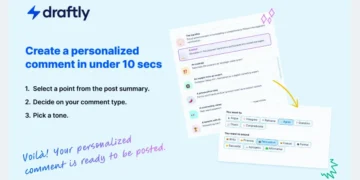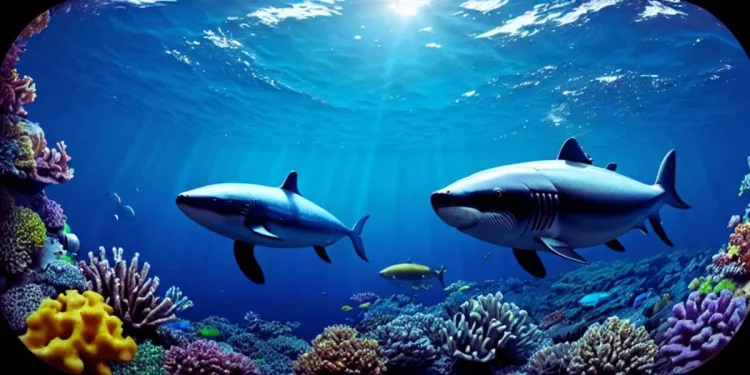Technology continues to open doors to previously unimaginable worlds. Today, we dive into the depths of the ocean, not with a submarine, but with the help of virtual reality.
Although VR is associated with video games or virtual worlds, its application goes beyond that, even reaching underwater exploration.
Virtual reality (VR) has evolved rapidly. Once limited to military training or flight simulations, today, thanks to technological advances, it has become popular in homes and various industries. This technology simulates virtual environments, allowing users to feel like they are “there”.
Deepsea: Our underwater guide
Deepsea is a prototype that uses VR to offer a unique underwater experience. With it, users can explore scenarios such as the Indonesian or Pacific Ocean, interacting with marine wildlife and learning about the ecosystem.
The project “Deepsea: A Meta-ocean Prototype for Undersea Exploration” has been developed by a team of experts in human-computer interaction and graphics. The main responsible persons and authors of the project are:
- Jinyu Li
- Ping Hu
- Weicheng Cui
- Tianyi Huang
- Shenghui Cheng
These professionals have worked together to research and develop this prototype that combines Metaverse technologies with virtual reality, focused on underwater exploration.
The article and details of the project have been published on the “arXiv.org” website, a platform known for hosting preprints of research in various areas of science and technology. However, the article does not specify specific commercial platforms or websites where the “Deepsea” prototype is available to the general public.
It is possible that since it is a prototype and research in development, it may not yet be commercially available or require specific agreements for access.
Modeling the underwater world
The process of creating this virtual environment is complex. Creatures and scenarios are modeled based on real images, ensuring a visually rich and educational experience. Each creature, from a simple fish to a majestic shark, is accurately modeled, considering its movements and behaviors.
Interaction and learning
Beyond simple observation, Deepsea allows users to interact with the environment. They can select creatures, obtain information about them and answer quizzes that enrich their knowledge of the ocean.
What do users say?
A study was conducted with 50 participants to evaluate the Deepsea experience. The results showed high satisfaction, highlighting the immersion and interactivity of the prototype. These data support the educational and recreational potential of this tool.
Deepsea is not just a game or an educational tool; it is a bridge between us and the vast ocean that is still largely unknown to us. Through technology, we can get closer to those mysteries and learn to value and protect our seas.
Conclusion
Deepsea offers a glimpse into the future possibilities of using virtual reality for ocean exploration and education. By accurately modeling underwater environments and creatures, the prototype provides an immersive educational experience unavailable through traditional media.
User feedback highlights Deepsea’s potential both for deepening public knowledge of marine biology and inspiring greater appreciation for ocean conservation.
As VR technology progresses, experiences like Deepsea could play a major role in expanding access to undersea worlds for research, recreation, and raising awareness. While still an early research prototype, Deepsea shows the meaningful potential of VR beyond just gaming into new digital frontiers we have yet to explore.
Underwater VR could soon transition from prototype to a radical new lens for anyone to discover the mysteries of the deep blue sea.
Frequently Asked Questions
What does Deepsea allow users to do?
Deepsea lets users virtually explore the seafloor through photorealistic VR, interact with marine life, and learn about different creatures and environments via quizzes and information.
How was Deepsea developed?
It was created by a team of human-computer interaction and graphics experts who accurately modeled real underwater scenarios and animals using VR technology.
Can anyone try Deepsea today?
As a research prototype, Deepsea does not appear to be publicly available yet beyond the study. It may require specific agreements for access.
What did studies show about user response?
Early user studies found high satisfaction with Deepsea’s immersion and interactivity. Most felt it had strong recreational and educational potential.
How could Deepsea impact ocean research and conservation?
By providing wider public access to underwater environments, Deepsea could inspire greater appreciation for marine biology and motivate conservation efforts.
Follow us on our social networks and keep up to date with everything that happens in the Metaverse!
Twitter Linkedin Facebook Telegram Instagram Google News Amazon Store












































